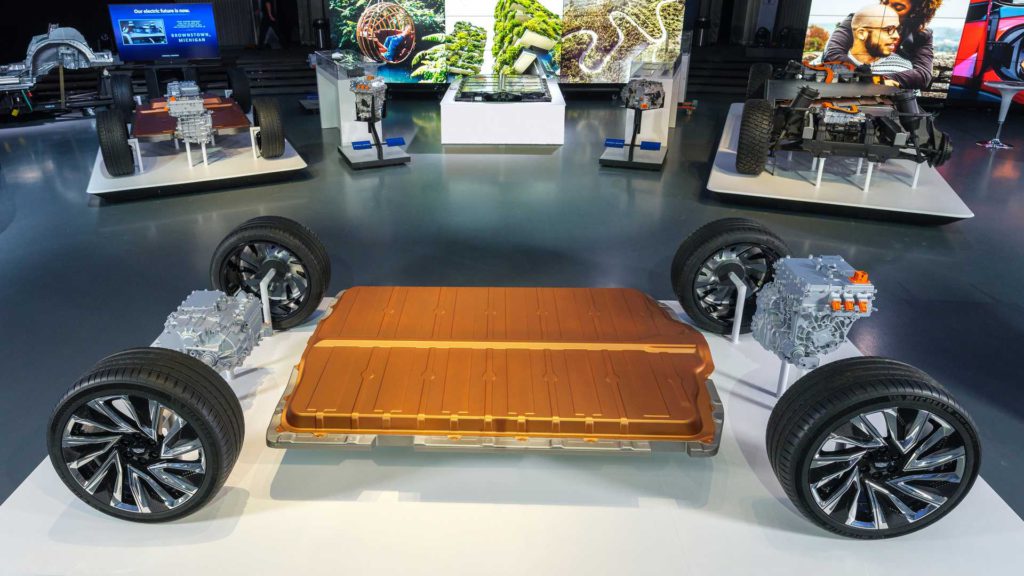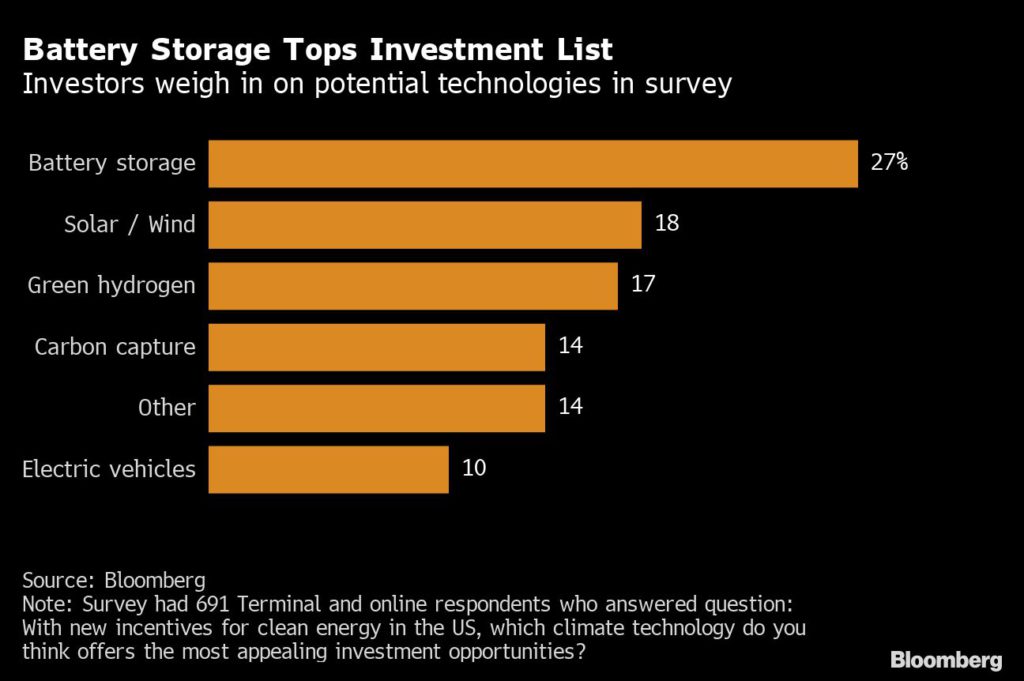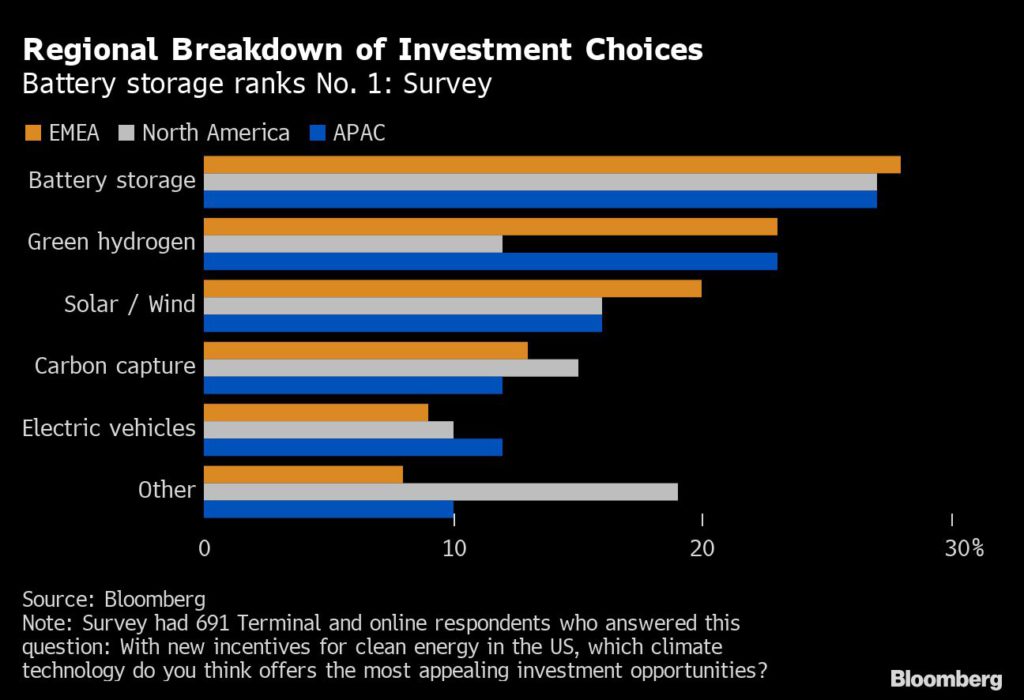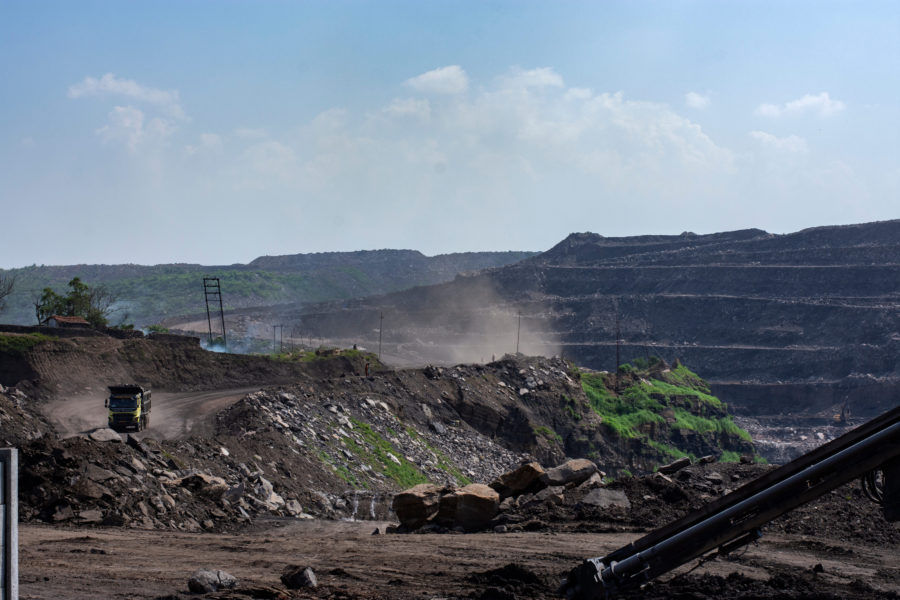Battery storage tops list for climate tech investors: ESG survey

At least $369 billion. That’s the amount of money made available to bolster clean energy from the landmark Inflation Reduction Act.
And investors are circling. Opportunities range from renewable and nuclear energy to electric vehicles and newer technologies such as batteries, hydrogen and carbon capture, utilization and storage.
The battery-storage market was picked as the sector with the most potential in a Bloomberg News survey of Terminal and Bloomberg.com readers. Roughly 27% of the 691 respondents picked battery storage as their top pick. Solar and wind companies placed second at 18%, followed by green hydrogen, carbon capture and EV manufacturers.

Ion Yadigaroglu, co-founder of Capricorn Investment Group, which manages about $10 billion, singled out battery storage, rather than more mature industries like solar and wind.
Much of renewable energy goes into a battery before it’s ultimately used and it’s currently “costing us more to store this energy than to make it,” Yadigaroglu said. As a result, batteries offer a larger “addressable market with more room for improvement from a technology perspective,” he said.
J. Stern & Co. is interested in the hydrogen sector, according to Katerina Kosmopoulou, a partner at the investment firm.
“It’s a nascent technology…”
“It’s a nascent technology obviously, but also one that, with a 10-year horizon, you know it’s going to have to play a role in the decarbonization of the economy,” she said.
Venture-capital firm SOSV is focused on startups in battery recycling, cement and textile production, and grid-level energy storage, said founder Sean O’Sullivan. “For our companies in these climate categories, the IRA’s incentives will make their products more affordable, which helps them compete with incumbents and enter markets faster.”
At BlackRock Inc., the world’s largest asset manager, David Giordano, global head of climate infrastructure, said hydrogen and carbon capture will likely be two big winners from IRA. “New and increased subsidies should attract investors to these developing technologies,” he said.
Globally, the Bloomberg survey showed that battery storage ranks as offering the most value for respondents from each of the three biggest regions: the Americas, Europe, Middle East and Africa, and the Asia-Pacific region. Green hydrogen and solar and wind placed second and third.

Not everyone is overly bullish in the short term because of overhanging concerns about rising interest rates and high crude prices.
“If you think about areas like green hydrogen and carbon capture and these kind of technologies, they’re 20-year, 30-year onwards opportunities,” said Martin Todd, a portfolio manager at Federated Hermes Ltd., which oversees almost $625 billion. “In the current interest-rate environment, investors perhaps aren’t as willing to explore those opportunities as they might have been a year or so back.”
Analysts at UBS Group AG said IRA is best characterized as an “infrastructure-oriented carrot” with multiple incentives. They identified almost 60 publicly traded companies with “positive stock implications” tied to the bill.
(By Natasha White and Lisa Pham, with assistance from Saijel Kishan and Brad Skillman)
Read more: The battery supply chain is finally coming to America
More News
Gates, Bezos-backed critical minerals explorer to ‘go big’ on Congo – report
April 27, 2025 | 08:27 am
{{ commodity.name }}
{{ post.title }}
{{ post.date }}



Comments